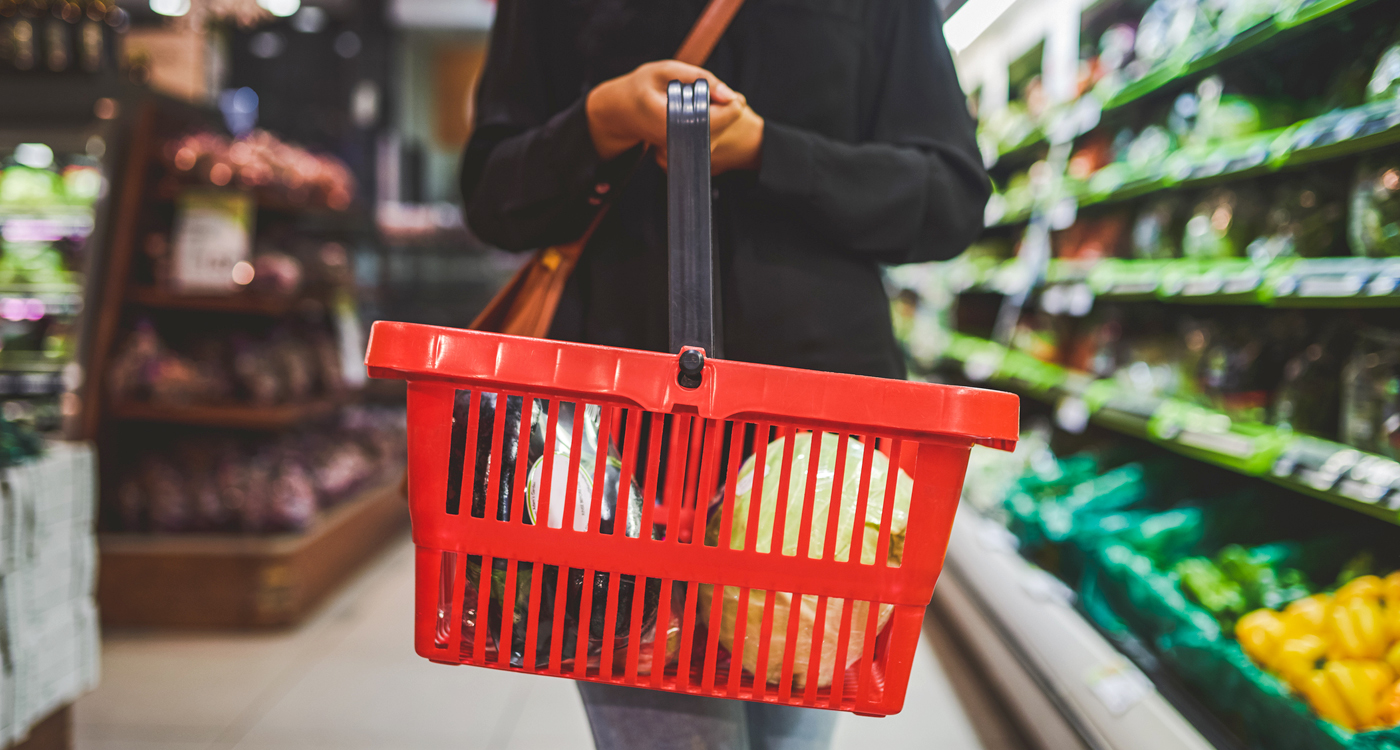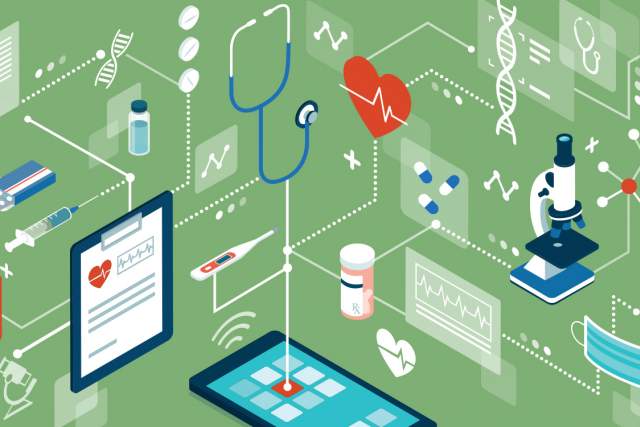Researchers from Tuck and Geisel Model COVID-19 Transmission in Retail Stores
An interdisciplinary team of faculty and Ph.D. candidates collaborated on a study published recently in Proceedings of the National Academy of Sciences.

The researchers conclude that reducing speed variance among grocery shoppers and limiting shopper density are effective in a variety of transmission scenarios.
Last spring, as the COVID-19 pandemic disrupted routines for billions of people across the world, Tuck professors Robert Shumsky and Laurens Debo were paying particular attention to changes they noticed in their local community.
Namely, they took note of the new rules emerging in grocery stores, such as one-way aisles, stickers on the floor reminding shoppers to keep their distance from each other, capacity limits in stores, and special shopping hours reserved for the elderly. Shumsky and Debo are professors in the field of operations management, and have each spent a lot of time modeling the flow of people through stores and other spaces, so what they were seeing on the ground as they shopped piqued their curiosity. Were these interventions helping slow the spread of the virus? To keep people safe, are some of these changes more effective than others? They intended to find out.
There was just one problem. “We realized pretty quickly we didn’t know anything about how COVID-19 is transmitted,” Shumsky says.
To fill in that gap, they would need help from an epidemiologist. Through a friend, Shumsky connected with Anne Hoen, an associate professor of epidemiology, biomedical data science, and microbiology and immunology at the Geisel School of Medicine. Hoen was excited to join the project, and enlisted two Ph.D. students in the Quantitative Biomedical Sciences program—Rebecca Lebeaux and Quang Nguyen—to help understand the latest scientific knowledge about COVID-19 transmission.
The product of their collaboration—“Retail Store Customer Flow and COVID-19 Transmission”—was just published in the prestigious journal Proceedings of the National Academy of Sciences. In it, they model the rate of virus transmission in a simple retail store with aisles where people move at different speeds and pass each other. The authors use the model to test various interventions and determine which ones most effectively reduce the spread of the disease within a store’s four walls. They conclude that reducing speed variance among shoppers and limiting shopper density are effective in a variety of transmission scenarios. Controlling the number of customers are in the store by limiting the rate of entry is the most powerful intervention: if you halve the number of people in a store, transmission rates will decrease by a factor of four.
The paper identifies a hole in the science. We just don’t know exactly how the virus is transmitted, and it makes a difference in what kind of operational intervention can help most.
Robert Shumsky
Since the beginning of the pandemic, the scientific understanding of the modes of transmission has evolved, but there are still some unknowns. Initially, it was unclear if the virus could be spread when people touched fomites—objects that carry infectious material. Now it is believed fomites play a very small role in transmission, and that COVID-19 is mostly spread through droplets expelled and inhaled when people breathe. Some droplets are relatively large and fall to the ground relatively quickly. These can transmit the virus between two people in close contact. The smaller droplets, known as aerosols, are light enough to float in the ambient air and linger in an enclosed space long after the people who expelled them have left.
At this point, epidemiologists don’t know exactly how important the role of aerosols is in spreading the disease, so Shumsky and Debo had to create transmission models for each scenario. In this process, they discovered that if the virus is transmitted more directly, via large droplets, the direction of customer flow in a store is very important. “If this is the case, you can cut transmission by more than a two-thirds if you get everyone to move in the same direction,” Shumsky explains. But it seems that aerosols also play a role in transmission, and if aerosols are preeminent then the direction of flow is less important, compared to other factors such as improved ventilation. “What this points to is: We need to find out,” Shumsky says. “The paper identifies a hole in the science. We just don’t know exactly how the virus is transmitted, and it makes a difference in what kind of operational intervention can help most.”
Grocery shopping is not a particularly high-risk activity. And yet, grocery shopping is something we have to do frequently, so it is relevant to public health.
Anne Hoen
Assuming COVID-19 is spread both via large droplets and aerosols, as is likely, the researchers find that efforts to reduce shopper density and speed variance are worthwhile public health measures. Reducing density is fairly easy: you just limit the number of people inside a store. But very low densities also reduce revenues, because there are fewer shoppers in a given day. One way to mitigate revenue losses from less density is by getting customers to move more quickly through the store. “Stores can do that by making sure customers know where to go to get their items,” Debo says, “so they don’t linger around.” To combat speed variance, having special shopping hours for people 65 and over can be an effective tool. “Another idea is to dedicate different parts of the store for items that require less time to pick up,” Debo says. “When you direct the flow to these different areas, there will be fewer interactions among shoppers.” For example, people rushing through the store for milk, bread and eggs won’t have to go around people waiting at the meat counter.
While these interventions can make a significant difference in virus transmission, the authors stress that they are not as effective as wearing a good, tight-fitting mask. In fact, when comparing their model with observed transmission rates before mask wearing was widespread, they found transmission rates to be significantly lower. If the prevalence of COVID-19 in a given population is one percent, and a shopper is wearing a mask, their model estimates that person has a roughly 1-in-3000 chance of catching the virus in a store. “That’s pretty low,” Shumsky says. “And a lot lower than eating out in a restaurant or going to a group exercise class.”
Because so many of us visit stores in-person, however, it can be an important source of spread in the community. “Grocery shopping is not a particularly high-risk activity,” Hoen says, “especially if you’re wearing a mask and make an effort to stay distanced. And yet, grocery shopping is something we have to do frequently, so it is relevant to public health.”
Putting COVID-19 to the Test with Robery Shumsky
Tuck Alumni Lifelong Learning
Recorded February 11, 2021
How can we get the vaccine into arms more quickly? And what’s with those one-way aisles at the grocery store? COVID-19 has changed every aspect of life during the past year, whether we’re at the grocery store, visiting the doctor, or commuting to work (or not).

